Volkswagen Caddy (2015-2021) Review
Written by Andrew Brady
Quick overview
Pros
- Smart cabin and looks
- Strong engine range
- Good ride quality
Cons
- Rivals are more practical
- Can be noisy – not all models have a full-height bulkhead
- Outdated feel
Overall verdict on the Volkswagen Caddy
"The fourth generation of Volkswagen Caddy has a familiar silhouette to the previous versions, but the model brought in in 2015 had more than just an upgraded face."
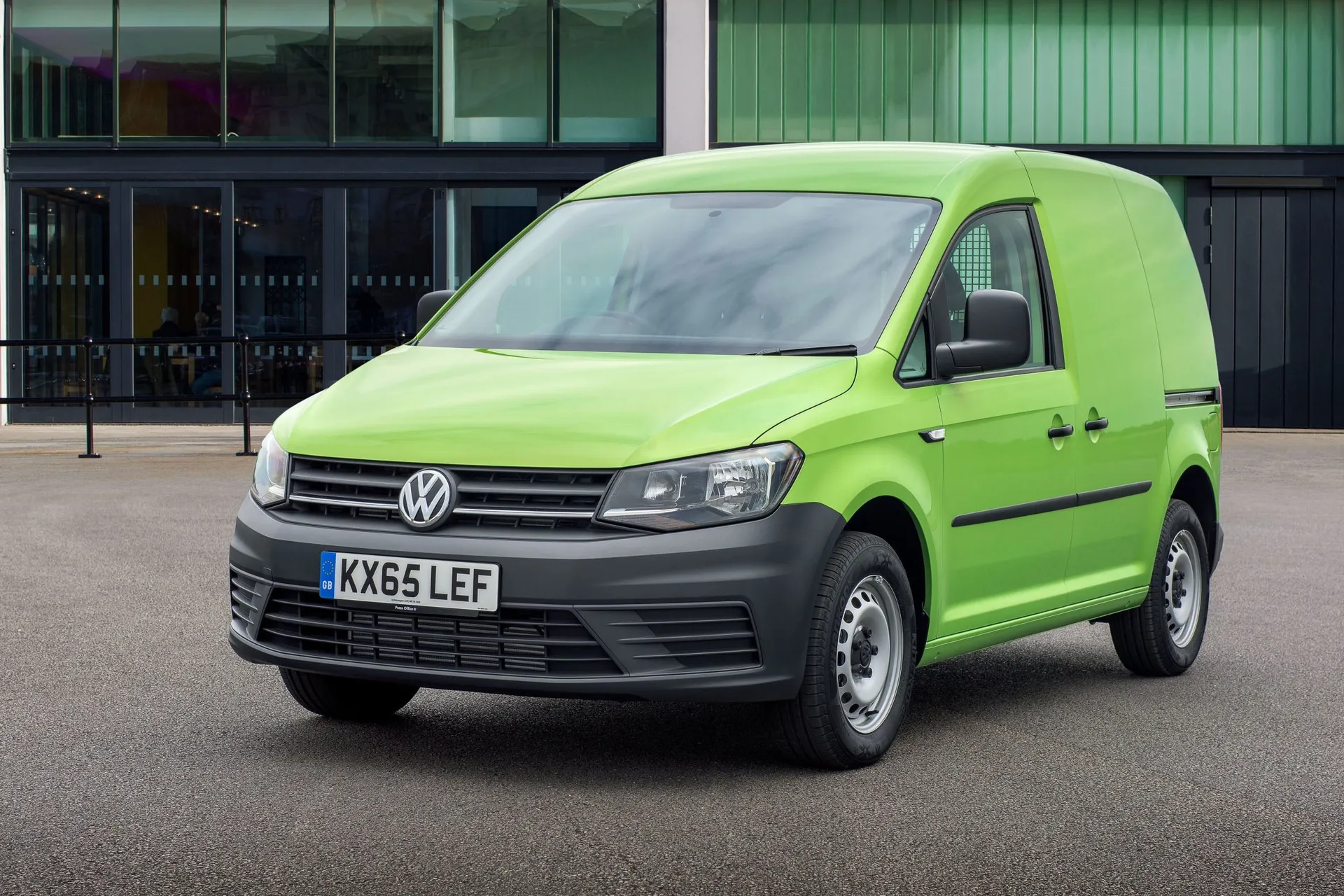
The panel van is available in two versions – the Caddy and Caddy Maxi. The latter, however, is just a grand name for the longer wheelbase version. The commercial vehicle range is rounded out by a kombi version, which is based on the Caddy Maxi and offers space for up to five and some kit. The Caddy is also available as a people carrier, named the Caddy Life.
The Caddy’s engine range is relatively simple, with just the two diesel engines and a petrol model to choose from. The two 2.0-litre diesel models offer 102PS or 150PS, while the 1.0-litre petrol offers the same 102PS as the lower powered diesel. Recent engines offer a lower powered 75PS version and a mid-range 122PS model, so both are likely to be in supply on the used market. The Caddy has also featured a selection of 1.0, 1.2 and 1.4 TSI petrol engines.
Most will opt for the front-wheel drive model but there is a four-wheel drive 4Motion model available too. The gearbox options are a five-speed manual and a six-speed DSG automatic model, with the latter standard on the higher-powered van.
Practicality has remained relatively unchanged over the years and the standard Caddy has 3.2 cubic metres of loading capacity while the Caddy Maxi boosts this to 4.2 cubic metres. You can get a Euro pallet Payloads range from 545kg up to just over 730kg. This means the Caddy loses out to its main rivals in the practicality stakes – the Ford Transit Connect manages over 100kg more while some, including the Citroen Berlingo, Peugeot Partner and Vauxhall Combo are capable of taking over a tonne.
The cabin has long been one of the Caddy’s strongest suits. It’s styled much the same as one of Volkswagen’s passenger car models, albeit not the most recent models given that the Caddy has been on sale largely unchanged for some years. The layout might be car-like, but Volkswagen has used materials that err towards durable rather that soft luxury, with harder plastics meaning it will take a few hits without showing it.
It drives impressively like a car, too, with suspension tweaks at the 2015 update enhancing what was already a smooth and comfortable ride. The steering is well weighted while the clutch is light which makes sitting in traffic less arduous.
But while the Caddy might have set the standard for a car-like experience when it was first launched, time has moved on and there are several vans that offer similar or better. It remains fundamentally talented, and is still an excellent and comfortable small van, but time has caught up with it and there are more refined and more practical options out there.
If you're looking for the passenger version, you need our Volkswagen Caddy Life (2015-) review. If you're after the new Caddy Cargo model, launched in 2021, you need our Volkswagen Caddy Cargo review.
Is the Volkswagen Caddy right for you?
The Caddy is the original premium small van, and its car-like cabin is still a smart and well-laid out place, even if it isn’t the most modern feeling contender in its class any more.
It is still a smart and attractive van, though, and rightly appeals to those who want a van that makes a visual statement – the big, flat side panels enable you to plaster your brand on the side.
It’s more than a moving billboard, though, as it has a really strong range of engines. Petrol features strongly among the Caddy’s past and present engine range, too, which means there are more options available for those that want a small urban commercial vehicle.
What's the best Volkswagen Caddy model/engine to choose?
There are three main trim levels in the Caddy range, with Startline, Trendline and Highline all available. The Startline comes with acceptable level of equipment for a basic model, but lacks a few key pieces of kit to make it the most recommendable version.
It’s at Trendline where you get things like air conditioning, extra adjustment on the driver’s seat including lumbar support, cruise control and rear parking sensors. It is also the point at which you get colour coded bumpers and door mirrors, which make more of the Caddy’s smart looks.
The Highline’s added extras include a decent satellite navigation system, but the Caddy’s relative age means that it isn’t the most modern of systems available in the small van class. It also doesn’t come with Apple CarPlay or Android Auto as standard, so it isn’t worth shelling out the extra.
The 102PS diesel is the only option available with the Trendline trim – you have to upgrade to the top-of-the-range Highline to get the 150PS model, which adds several thousand to the basic price.
What other vans are similar to the Volkswagen Caddy?
There are now several small vans that major on offering a car-like experience, with the Citroen Berlingo, Peugeot Partner, Vauxhall Combo and Toyota Proace City all fundamentally the same vehicle with different badging and aesthetic twists.
They are arguably the pick of the class for a relaxed, practical small van, but the Ford Transit Connect is also a strong contender and offers more in the way of a sharp drive. For badge status, Mercedes offers the Mercedes Citan, based on the Renault Kangoo.
Comfort and design: Volkswagen Caddy interior
"Getting comfortable in the Volkswagen Caddy is made easier by the fact that every version gets a three-way adjustable driver’s seat, with height adjustment included as standard, which is a rarity for a base model. You have to step up to the mid-level trim to get lumbar support, though. The steering wheel also adjust for reach and for rake, which means that most drivers will be able to find a position that suits them."
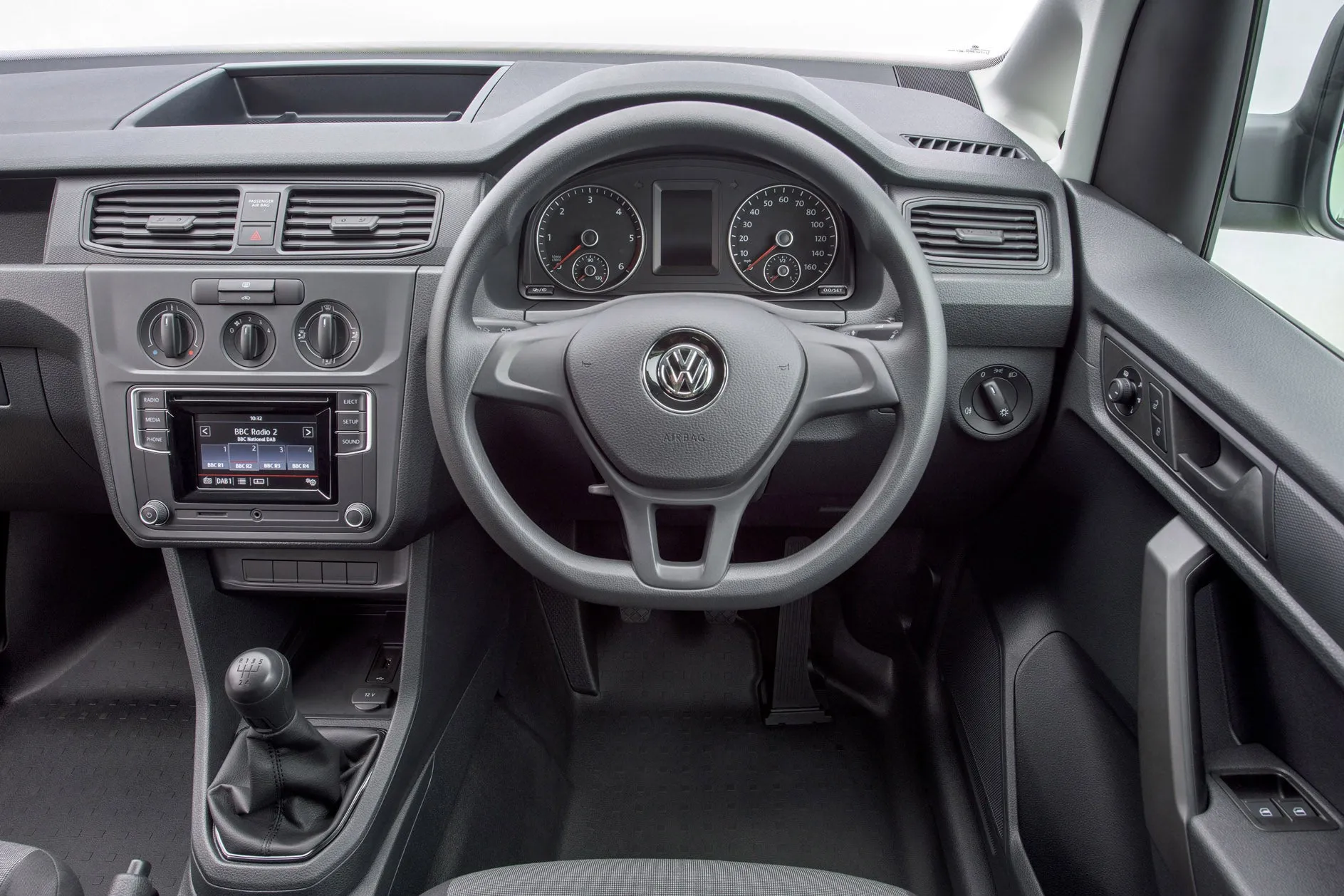
The relatively tall cabin means that you get large windows to the front and side, while there are small extra panes of glass in front of the door mirror. All this means that you can see out without craning your neck to a great degree, making staying comfy easier.
The cabin’s design was modern, once, but the Caddy’s relative age – the 2015 update could be seen as a facelift of a facelift – means that it no longer has the edge on its rivals style wise. It’s a simple layout, though. The main features such as the temperature are controlled by large and clear rotary dials and the stereo features big buttons that are easy to see and simple to press while on the move. Every model comes with buttons on the steering wheel mean that you don’t even have to move your hands from the wheel to adjust the settings.
It’s a shame that the screens in the models equipped with navigation are positioned so low down on the dash – you have to drop your eyes quite a distance to look at it.
Quality and finish
The Caddy’s cabin might look like a relatively recent Volkswagen Golf on the inside, if you squint a bit, but the materials are not as plush in the commercial vehicle. The plastics are harder and feel more robust, rather than soft and premium. This means that it gives over a reassuring feeling that it is built to last, though.
There is also a reassuring lack of squeaks and rattles from the various parts, and it feels really well screwed together. There is a lack of flex from the various parts in the central console and on the dash that backs this up, while the different storage compartments close with a solid thunk.
All versions come with the same cloth trim on the seats as standard, although you can upgrade this to either a harder-wearing cloth or a leatherette covering that should be easier to wipe down. Both options are relatively cheap so it need not be a financial decision when considering whether to upgrade or not.
Infotainment: Touchscreen, USB, sat nav and stereo in the Volkswagen Caddy
The screen in the Caddy is positioned relatively low down, which means that it is not as simple to glance as it would be if it were set higher on the central dash. Thankfully it is a clear system so it is easy to get the information that you are looking for at a quick glance.
The system is not Volkswagen’s very latest, but it is still impressive and comes with plenty of features. The large and easy-to-press shortcut buttons either side of the screen make it easy to switch between menus on the move. The lower trims get a smaller five-inch screen, although you can upgrade to a bigger screen as part of an optional pack. This larger system gets, among other things, a proximity sensor that brings up more functions when you move your hand close to the screen. This means the main display is uncluttered the majority of the time.
Because it is not the most modern of systems, it is still fitted with standard USB ports, rather than the USB-C ports of Volkswagen’s latest vehicles, which is a bonus given the majority of mobile devices still use the older cable. It also features Bluetooth and an aux-in cable.
It’s a shame that Android Auto and Apple Carplay don’t come as standard – instead you have to go for the App-Connect pack. It’s not a huge amount of extra cost, but given it is standard on rivals such as the Citroen Berlingo, it is disappointing you have to pay more.
Space and practicality: Volkswagen Caddy load space
Unlike several rivals, the Caddy only comes with two seats up front, which limits its appeal slightly. However, the space on offer for those two passengers is excellent. The tall cabin means that there is lots of headroom and more storage up above in the form of a shelf in the roof.
There are lots of other storage spaces, too, with a lockable glovebox, a dash-top slot and a handily large cubby in front of the gear lever. The door pockets are a decent size too.
The Caddy doesn’t match up to its rivals in the loading bay, though. The payloads fall short of the best in class, ranging from just under 550kg and up to just over 730kg. Given that several models in the class, including the newer Citroen Berlingo, Peugeot Partner and Vauxhall Combo, all offer up to 1000kg this shows how far behind the Caddy is in terms of weight-carrying ability.
It struggles compared to rivals on space, too. The space between the wheel arches is too narrow to take a Euro pallet sideways, although it will take it lengthways. The overall space isn’t too bad, though. The standard version offers 3.2 cubic metres while the Maxi offers 4.2 cubic metres. The Caddy Maxi’s interior is slightly taller and narrower than the standard model, but it is by such a small amount that you would be hard pushed to notice.
The rear doors are asymmetric, meaning that you should be able to open just the one, larger, door to get most things in and out. If you need to swing both of them out then they will go open to 180 degrees.
The Kombi model is based on the Maxi and offers seating for five. You can take all the seats out and use it as a van, but there isn’t quite the same amount of space on offer as there is in the Maxi because of the room taken up by the doors. It offers 4.1 cubic metres of room with all the seats out and 1.6 with them in place.
Handling and ride quality: What is the Volkswagen Caddy like to drive?
"The Caddy’s driving experience is another area where it can feel more like a car than a van. It’s particularly impressive around corners, with a sharpness to the steering that is close to the Ford Transit Connect, which is the best in class on this front. "
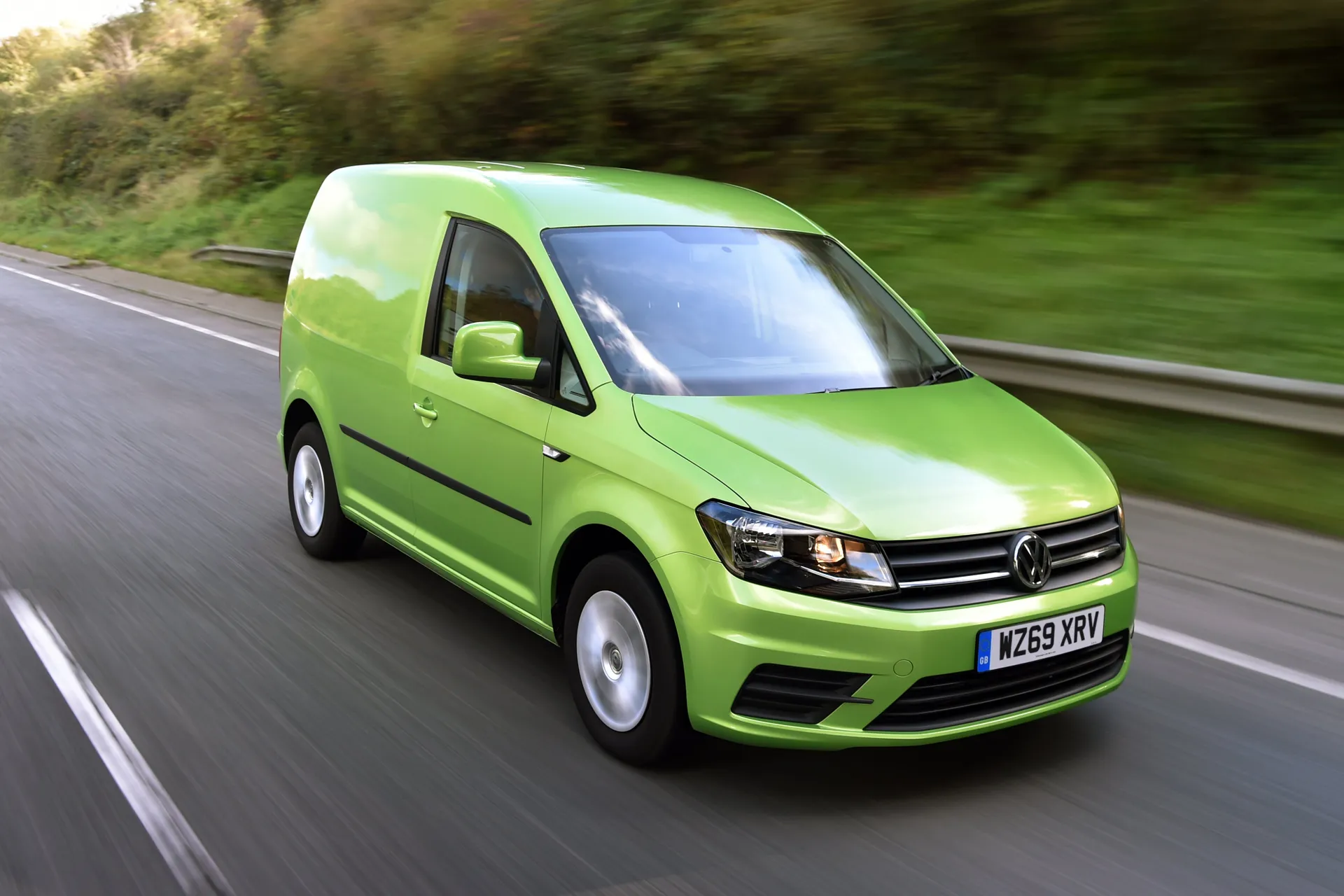
The suspension has always been impressive on the Caddy, but it was revised at the most recent update in 2015 to further improve the ride. It manages to hold the road, even when on rough tarmac, even at speeds and on surfaces where other vans would begin to feel unsettled.
This cornering ability does mean that the ride is slightly on the firm side but it stops short of being too harsh. Even on longer journeys it remains comfortable when faced with poor motorway surfaces. The majority of models come with 15-inch wheels as standard, steels in the case of the base model and alloys on the lower-powered Highline, while the most powerful Highline gets 16-inch alloys. Those who aren’t keen on making the Caddy’s ride firmer will be best off avoiding the expensive optional 17-inch alloys.
It’s easy to nip around in the Caddy at lower speeds, too. Those big windows and decent sized door mirrors mean that seeing out and around is easy, while the tight turning circle helps with squeezing around town. This is the case for both the standard model and the Maxi version. The light clutch pedal and short-throw gear change help take the stress out of driving the manual model in stop-start traffic.
What engines and gearboxes are available in the Volkswagen Caddy?
Strict emissions standards has whittled the Caddy’s engine range down in recent times, with the selection now limited to just a single petrol and two diesel options. The diesel models that remain are both 2.0-litre engines with a choice between 102PS and a 150PS. This means that the entry-level Caddy is more powerful than most, as the 75PS version is no longer offered.
This is no major loss as the 102PS model was always the better all-round bet of the two anyway. At 250Nm it has a good level of torque that means it is well suited to hauling heavy loads and it is up to keeping pace on the motorway. The only thing that holds it back at motorway speeds is its five-speed gearbox, which means that it sits at slightly high revs when you are cruising at faster speeds.
The 150PS model has loads more torque at 340Nm and settles down more at higher speeds thanks to it only being available with a six-speed DSG automatic gearbox. It’s a pacey engine, with 0-62mph of under 10 seconds. This is not something usually considered important on a van, granted, but it illustrates the pace of the engine.
The petrol engine might sound small given it is just a 1.0-litre, but it offers the same 102PS as the smaller diesel. It is a turbocharged engine with just three cylinders which is lighter than the older four-cylinder units, and more efficient. It even sounds quite good, too. It might boast the biggest payload of the Caddy’s range, but it has less torque than the others so it might struggle with carrying all that weight if you plan on spending lots of time going up and down hills.
Refinement and noise levels
The 1.0-litre petrol is the most impressive of the engines, with the smooth unit keeping engine noise to a really low level. Vibration is kept down as well, too, and it is a very relaxing van to drive.
The diesels are not as smooth or quiet as the petrol but are still good at keeping engine noise to an acceptable level.
The Caddy’s biggest problem is the lack of standard full-height bulkhead. It comes with a half-height bulkhead as standard, with the top half mesh rather than solid metal. This means that any engine or road noise is amplified by the rear loading bay, which makes for quite a loud, booming experience. This is particularly the case on the motorway and when the loading bay is empty.
It gets better when there is a load in there, but it is still not as good as if there is a full bulkhead and nowhere near as good as the top-level Peugeot Partner, which has increased sound deadening.
Safety equipment: How safe is the Volkswagen Caddy
You get four airbags as standard in a Caddy, which might not sound like much but is really impressive given most vans just provide one for the driver. Instead you also get one for the passenger and curtain ‘bags on both sides.
Given that, it is perhaps no surprise that the Caddy comes with some other excellent safety kit, too. It gets a city emergency braking system, brake assist, post collision braking system and a driver alert system. It’s a real bonus that all the standard safety kit comes on the entry-level model.
There are some optional systems you can add on, too. Adaptive cruise control, front and rear parking sensors and a park assist system are all available. Oddly a tyre-pressure warning system is only available as an option on the panel van models, although it is included on the Kombi version.
All models get a full-size steel spare wheel as standard, although you can swap that out for a tyre-inflation kit at no extra cost should you wish.
MPG and fuel costs: What does a Volkswagen Caddy cost to run?
The Caddy has proved to be a cheap to run van with the 1.6 TDI capable of returning more than 43mpg in real world driving. That's not particularly close to the claimed figures but the Caddy was tested under the old (and far from accurate) fuel economy test, hence why it falls considerably short of those official figures.
The 2.0 TDI 140 is the most impressive performer given its extra performance with drivers seeing close to 50mpg in the real world which is actually better than the official figures. It's another reason to go for the bigger diesel.
Insurance groups and costs
"The Caddy is the cheapest Volkswagen van to insure, with the 102PS diesel the cheapest to cover. "
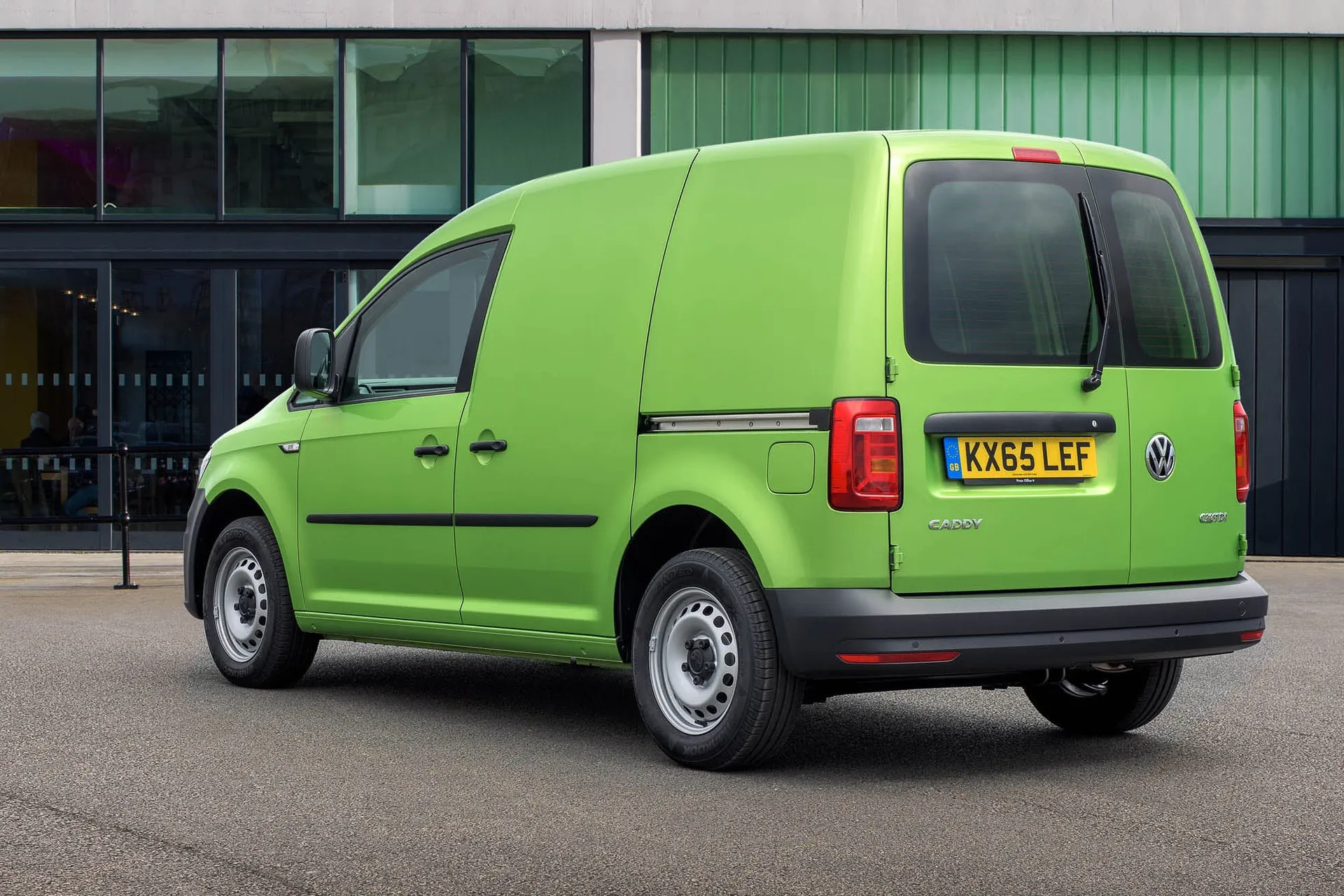
The 2015 model was a group higher than the 2010 to 2015 version, but it remains affordable across the range. Because of the high standard-fit levels of kit, there are only a couple of groups separating the cheapest and most expensive versions when it comes to insurance.
VED car tax: What is the annual road tax on a Volkswagen Caddy?
The Volkswagen Caddy panel van is classified as a commercial vehicle so owners will only have to pay the flat-rate VED and BIK tax rates. These are both much lower than the equivalent passenger car tax rates.
How much should you be paying for a used Volkswagen Caddy?
"The desirable nature of the Volkswagen Caddy, and its popularity with retail buyers that go for a higher spec of equipment, means that it holds onto its value better than many of its rivals. "
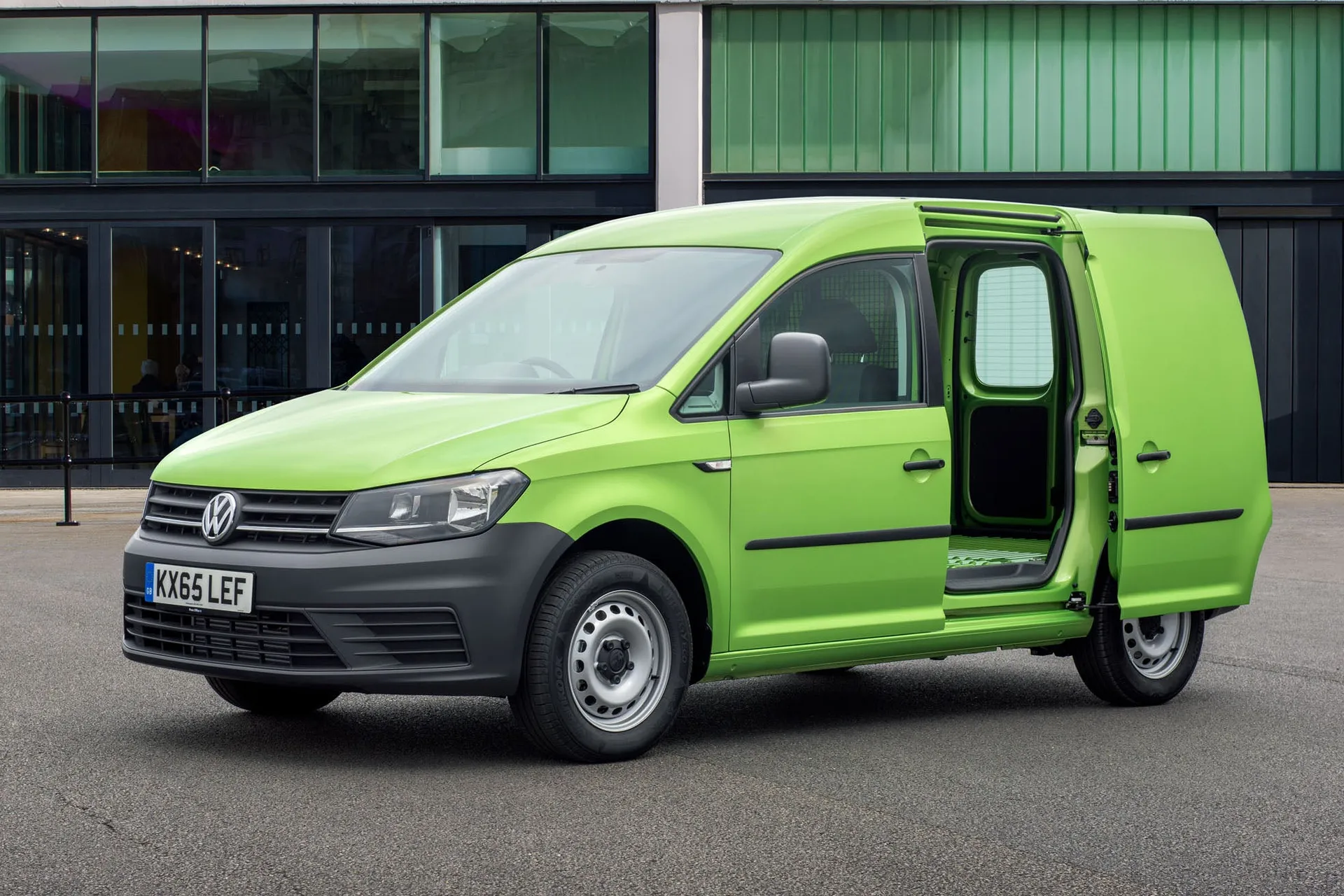
This doesn’t mean that it is out on its own compared to others – it holds around a third of its value after three years and 60,000 miles, which is similar to the Ford Transit Connect and better than the likes of the Fiat Doblo and Renault Kangoo.
Trim levels and standard equipment
While the speedy 2.0-litre 150PS diesel model with the DSG gearbox in Highline trim might seem appealing, it is much more expensive than the rest of the range so is not the version to buy with value for money in mind.
The sensible versions lie lower down the range. Although the Startline is well equipped, the Trendline trim is the one that makes the best all-round sense. It adds a few key bits of kit like air conditioning, cruise control, more seat adjustment and body coloured bumpers and door mirrors.
If you go for a Startline then one pack that is worth considering is the Business Pack. This adds an alarm, air conditioning and rear parking sensors, making the basic model that bit more usable.
Get our latest advice, news and offers
Keep me updated by email with the latest advice, news and offers from heycar.
By submitting you agree to our privacy policy



